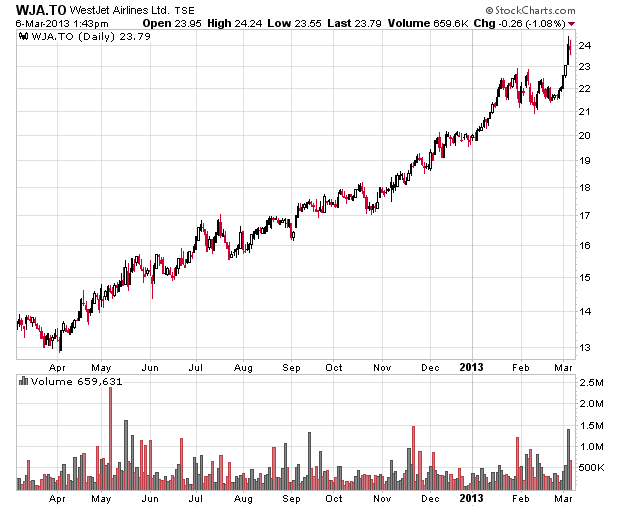Air Canada and some major banks proposed a $250 million cash buyout of Aimia’s loyalty business. They used a headline amount of a $2.25 billion buyout. They cited that $2 billion of this was the “assumption of points liability”, which is associated with Aimia’s (TSX: AIM) costs of purchasing rewards for their customers.
Since most of these rewards consist of flights provided by Air Canada, it stands to reason that Air Canada’s citing of the liability is wildly over-exaggerated.
Other notes:
* This is an asset purchase and not a “take-over” per se; existing management will still be in control of the entity
* Aimia still has a bit of debt to deal with, although $250 million will ease it considerably (they will probably end up in a net cash position)
* Aimia has no other potential purchasers of this business. Only Westjet can conceivably counter-bid (any other major national airlines in Canada? Nope!), but that is simply not going to happen for a variety of reasons
* Aimia really has no other business than their loyalty business concerning their Aeroplan program
* The proposal has a “respond by August 2 or forget it” hard-ball ultimatum
Shareholders have been given one hell of a gift and are lucky to see this. Preferred shareholders even more so.
Aimia management is basically forced to take this offer. It was very cunning of Air Canada to scrap the agreement, completely kick the bloody carcass into the ground, and then propose a low-ball offer to purchase up the unit, which is the business equivalent of an unconditional surrender after getting an atomic bomb dropped onto it. Well done Air Canada!

